Campo de concentración AUSCHWITZ (3ªParte y 4ºParte)
Hoy vamos a tratar el tema de las cámaras de gas en la tercera parte.
Después de este calvario, si conseguías seguir viviendo te mataban con el gas: ZYKLON B.
El gas era producido por la misma empresa alemana que inventó las pastillas anticonceptivas, creo que es un dato muy curioso. De este modo, llegaba al campo en una especie de latas de distintos tamaños con distinta cantidad. Al principio, los nazis no sabían exactamente que cantidad era la que necesitaba respirar una persona para morir, con lo cual, experimentarón primero en esos sótanos de los que os hablé ayer.
Today we are going to discuss only the issue of gas chambers.
After this ordeal, if you could continue living they would kill you with the gas: ZYKLON B.
The gas was produced by the same German company that invented the contraceptive pills, I think it is a very curious fact. In this way, he arrived in the field in a kind of cans of different sizes with different amounts. At first, the Nazis did not know exactly how much a person needed to breathe to die, so they experimented first in those cellars I told you about yesterday.
Primero, soltaron muy poca cantidad al final del pasillo y vieron a las horas que los prisioneros del fondo habían muerto pero que los del principio todavia estaban respirando con dificultad. Así, decidieron subir la dosis del gas y volvieron a probar. Esta vez, los prisioneros murieron de forma mas lenta pero con bambollas por todo el cuerpo ya que la dosis había sido demasiado fuerte y desintegraba el organismo antes de que murieran asfixiados.
En fin, después de varios intentos dieron con la medida adecuada y construyeron la cámara de gas. La construyeron algunos prisioneros del cammpo y que, evidentemente son quiénes inaguraron la cámara. Fue un éxito. Los prisioneros entraban allí y morían en 5 minutos. Entonces empezó la masacre.
Estas son las latas y el gas. Sé que la mayoría creiais (como yo) que era un vapor invisible pero no. ZYKLON B eran unas piedrecitas que se tiraban desde la parte de arriba de la cámara y en contacto con la temperatura y el oxígeno explosionaban y tiraban el gas.
First, they released very little at the end of the corridor and saw at the time that the prisoners in the bottom had died, but those at the beginning were still breathing hard. So they decided to raise the dose of the gas and tried again. This time, the prisoners died more slowly but with bambollas throughout the body since the dose had been too strong and disintegrated the body before they died suffocated.
In short, after several attempts they took the right measure and built the gas chamber. It was built by some prisoners of the cammpo and, evidently, who inaugurated the chamber. It was a success. The prisoners went in there and died in 5 minutes. Then the massacre began.
These are cans and gas. I know most believe (like me) that it was an invisible vapor but not. ZYKLON B were small stones that were thrown from the top of the chamber and in contact with the temperature and the oxygen exploded and threw the gas.
A continuación, voy a redactar esto mediante frases cortas el proceso de la cámara. Os dejo la foto bajo y así veis la imágen antes de leer.
Next, I will write this through short sentences the process of the camera. I leave the photo under and you see the image before reading.
Los prisioneros llegaban a la cámara contentos y convencidos de que iba a ducharse pero era todo mentira. Cuando entraban por la puerta, los nazis la cerraban tras ellos inmediatamente para evitar que salieran corrriendo. Tras esto, les obligaban a desnudarse y colgar sus pijamas en las perchas. Así que cuando saliesen de la ducha pudieran vestirse de nuevo, engañados hasta el último momento. En este momento podían raparlos o no, depende de las personas que tuviesen que exterminar ese día. Les conducían por un pasillo gritandoles “rápido, rápido” y riéndose de ellos hasta la sala del gas. Una vez dentro cerraban la puerta con violencia y empezaban a caer cristalitos del techo. Al minuto, se escuchaban gritos de dolor y de auxilio porque se estaban ahogando en vida. Dos minutos después, empezaban a caer unos encima de otros, muertos, apilandose en pirámide. Podían tardar en morir hasta 5 minutos. Luego, abrían la cámara y dejaban pasar 20 minutos para que se ventilara. Más tarde, llamaban a los prisioneros encargados de sacar los cuerpos. Estos prisioneros, se encargaban de raparles, quitarles los dientes de oro y las cosas de valor que tuviesen. Después, los llevaban en un ascensor a la parte de bajo donde iban mtiendolos de uno en uno, o de dos en dos, en los hornos crematorios. Con las cenizas podían pasar dos cosas, o que se aprovecharan como abono del campo; o que los nazis se las llevaran y las desprendieran en el mar.
The prisoners arrived at the camera happy and convinced that he was going to shower, but it was all a lie. When they entered the door, the Nazis closed behind them immediately to prevent them from running. After that, they were forced to undress and hang their pajamas on hangers. So when they got out of the shower they could dress again, deceived until the last moment. At this moment they could shave them or not, it depends on the people who had to exterminate that day. They were led down a corridor shouting "quick, fast" and laughing at them to the gas room. Once inside they closed the door violently and crystallites began to fall from the ceiling. The minute they heard screams of pain and relief because they were drowning in life. Two minutes later, they began to fall on top of each other, dead, staking themselves in a pyramid. They could take up to 5 minutes to die. Then they opened the camera and allowed 20 minutes to be ventilated. Later, they called the prisoners in charge of removing the bodies. These prisoners, were responsible for shaving them, remove the gold teeth and valuable things that they had. Afterwards, they were taken in an elevator to the lower part where they were dug one by one, or two by two, in the crematorium ovens. With the ashes two things could happen, or that they would be used as fertilizer of the field; Or that the Nazis take them and drop them off at sea.
Esto es un breve resumen de lo que sucedió en Auschwitz I, en el siguiente post publicaré lo que pasó en Auschwitz – Birkenau (solución final) y os enseñaré la famosa foto de las vias de tren.
Gracias y un saludo! Espero que lo visiteis algún día, es nuestra historia y creo que es algo de lo que debemos aprender para que jamás vuelva a suceder algo así.
4º PARTE
Bienvenidos a Auschwitz – Birkenau o Auschwitz II. Este campo, sin duda es mucho más siniestro que el anterior ya que tiene grandes espacios planos y los edificios ya no son de ladrillo si no que son casetas enormes de madera donde cala el frío y la humedad.
This is a brief summary of what happened at Auschwitz I, in the next post I will publish what happened at Auschwitz - Birkenau (final solution) and I will show you the famous photo of the train tracks.
Thank you and best regards! I hope you visit it someday, it is our history and I think it is something that we must learn so that something like this will never happen again.
Hello friends! Welcome to Auschwitz - Birkenau or Auschwitz II. This field is certainly much more sinister than the previous one since it has large flat spaces and the buildings are no longer brick but they are huge wooden huts where the cold and humidity drain.
La foto de bajo, son las literas. Si os acordais de las camas de Auschwitz I podeis comprobar que ahora con literas de tres y de matrimonio. En cada cama dormían hasta 8 prisioneros en horizontal, con lo cual aprovecharon mejor el espacio y consuguieron albergar a 700 prisioneros en cada nave de madera, existiendo más de 30 naves en el campo. En el centro de cada nave había una especie de construcción de piedra que asimilaba un recorrido de calefacción. No funcionaba especialmente bien y además, tan sólo les pertenecía un cubo de carbón por nave al día y no todos los días.
The photo below, are the bunk beds. If you remember the beds of Auschwitz I can check that now with three bunks and marriage. In each bed they slept up to 8 prisoners horizontally, which made better use of the space and consented to house 700 prisoners in each wooden ship, with more than 30 ships in the field. In the center of each ship was a kind of stone building that took in a heating path. It did not work especially well and besides, they only owned one bucket of coal per ship per day and not every day.
Al salir de la nave, si continuabas andando hasta el final (unos 2km) llegabas hasta lo que ha quedado de las cámaras de gas. En este campo, construyeron 5 cámaras de gas y 2 explanadas. Cada cámara era el doble de grande que la del primer campo y albergaba espacio para 2500 prisioneros. Morían cada 30 minutos 2500 personas. Horrible. Menos mal que tan sólo quedan las ruinas.
When leaving the ship, if you kept walking until the end (about 2km) you would get to what is left of the gas chambers. In this field, they constructed 5 gas chambers and 2 esplanades. Each chamber was twice as large as that of the first camp and housed space for 2500 prisoners. 2500 people died every 30 minutes. Horrible. Luckily, there are only ruins left.
A la derecha de las cámaras se ha construido un monumento con escalones en memoria de todas víctimas. Cada piedra puesta representa una víctima de este campo de concentración. El monumento muy extenso, se te encoge el corazón. Además, hay inscripciones en todos los idiomas que se llegaron a hablar en el campo. Voy a poner una foto para que os hagais una pequeña idea de todos los escritos que habían y luego la pondré en la que más se acerba al español.
To the right of the cameras has been built a monument with steps in memory of all victims. Each stone placed represents a victim of this concentration camp. The monument is very extensive, you shrink your heart. In addition, there are inscriptions in all the languages that came to speak in the field. I am going to put a photo so that you give a small idea of all the writings that they had and soon I will put it in which it was more to the Spanish.
Bueno, espero que os haya parecido interesante. Por último, quiero contaros un par de datos curiosos sobre el campo de concentración y lo que allí sucedió. Lo llamaré sección de cotilleo nazi.
Una cosa que me llamó la atención fue que tan sólo tardaron un año en reabrir el campo de concentración tras el Holocausto. Para turismo me refiero. SOLO UN AÑO. Me parecía increíble, todo para dar a conocer al mundo el destrozo y las barbaridades que los nazi habían cometido en ese período de tiempo. Al igual, no se restauró prácticamente nada y quisieron que todo permaneciese intacto.
Otro dato, que creo que es importante saber es que ejecutaron a uno de los altos diligentes del campo en el propio campo y fabricaron una horca especialmente para él. Bajo os dejo la foto.
Well, I hope you have found it interesting. Finally, I want to tell you a couple of curious facts about the concentration camp and what happened there. >I'll call it a Nazi gossip section.
One thing that struck me was that it only took a year to reopen the concentration camp after the Holocaust. For tourism I mean. ONLY ONE YEAR. It seemed incredible, everything to make known to the world the destruction and barbarities that the Nazis had committed in that period of time. Likewise, virtually nothing was restored and they wanted everything to remain intact.
Another fact, which I think is important to know is that they executed one of the diligent highs in the field and made a pitchfork especially for him. I leave the photo.
ADIOOOOOOOOOOD Y GRACIIIIIIAAAAS!!
BYEEE BYEEE AND THANK YOU!





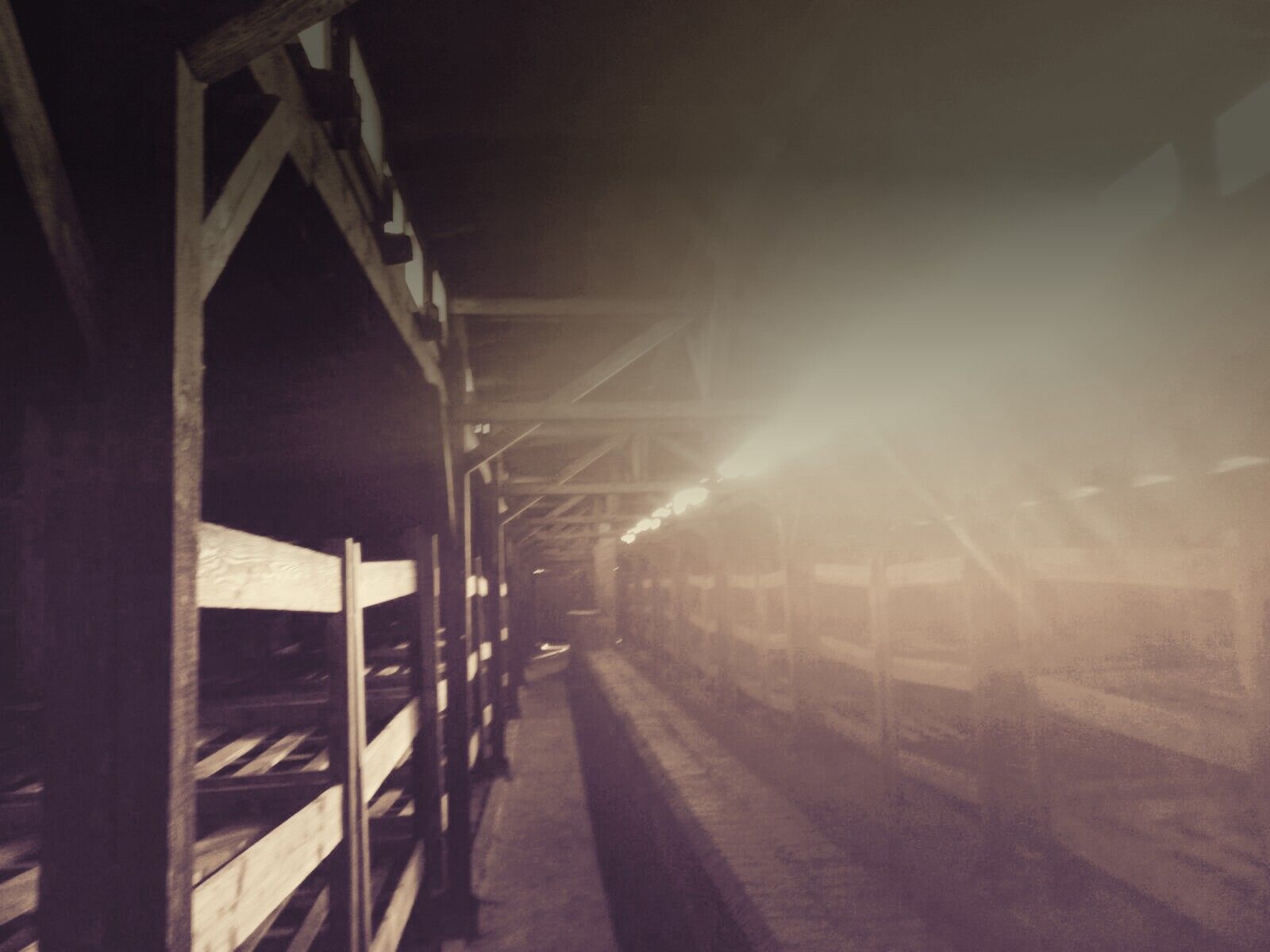

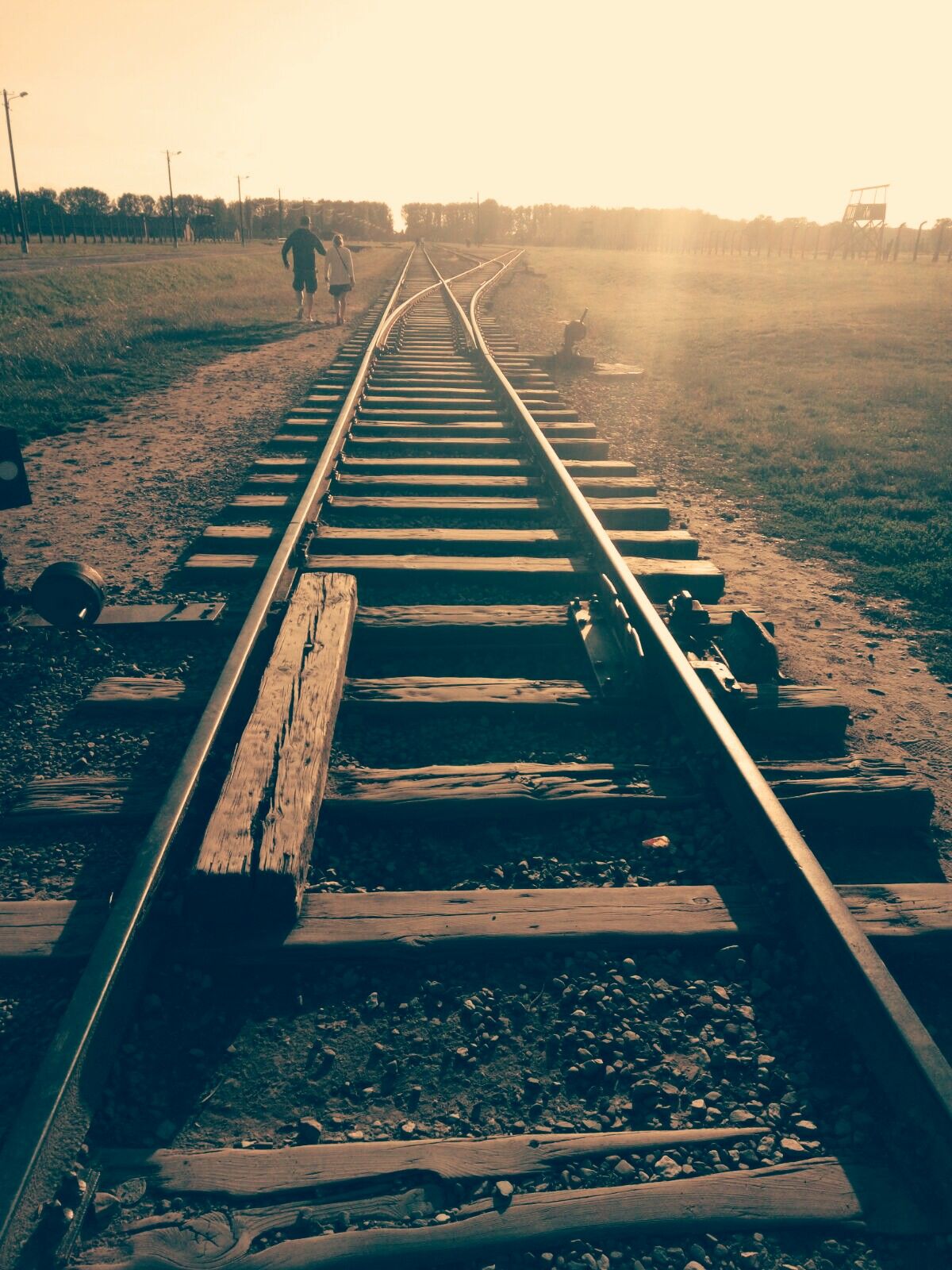
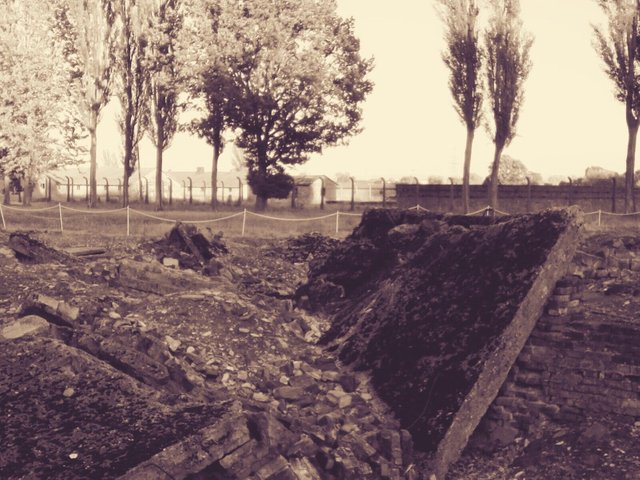
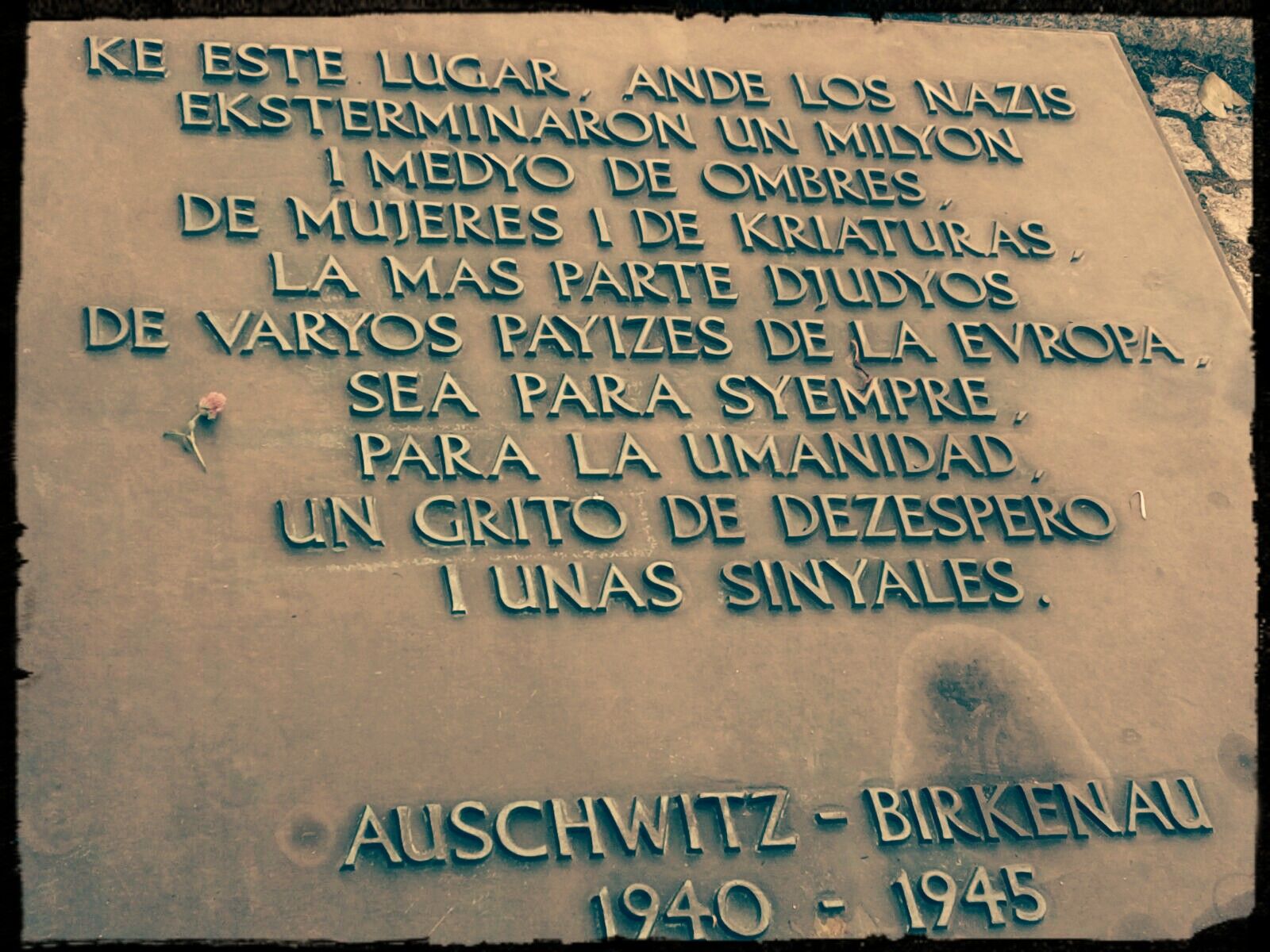

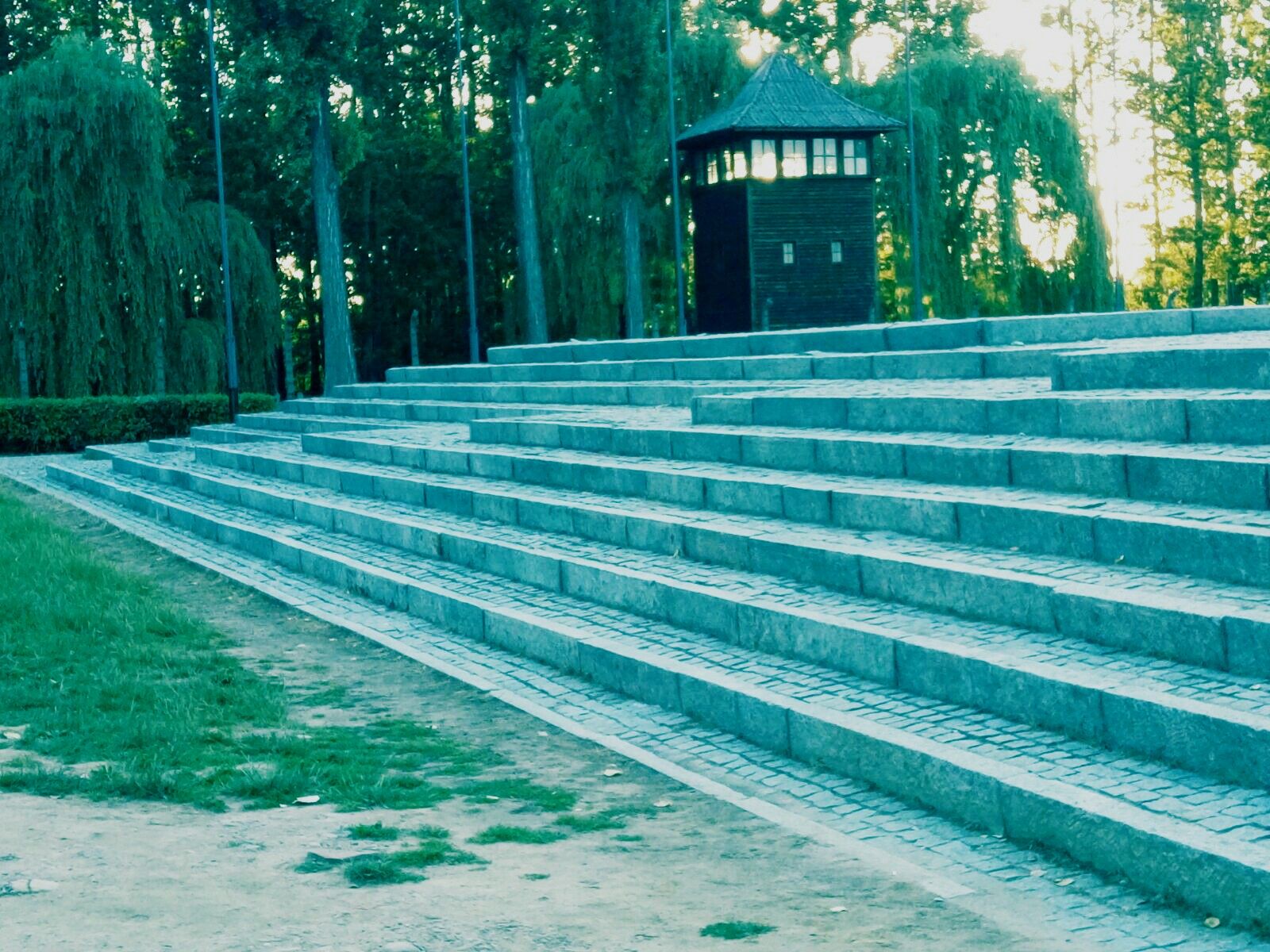
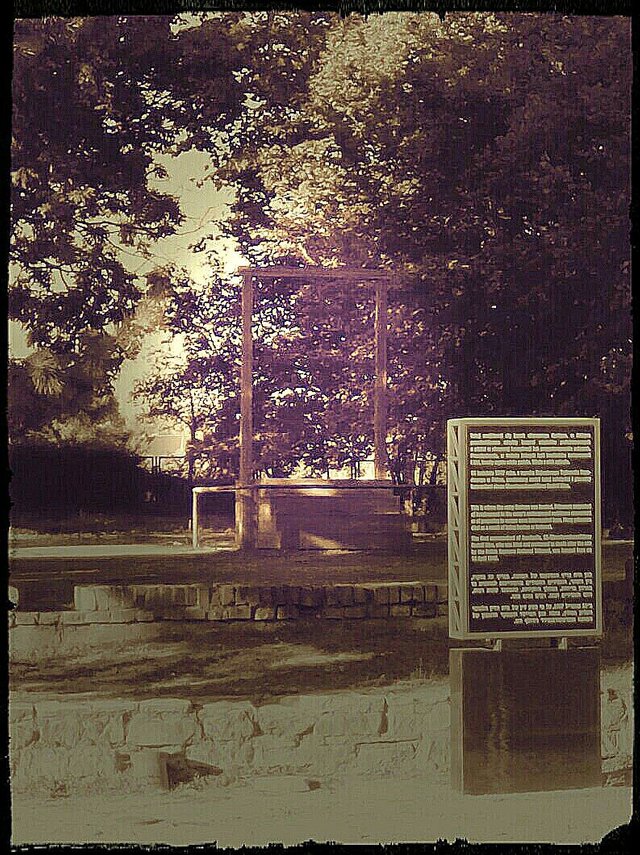
Buenos días, yo estuve el año pasado...y bufff!! Se te ponen los pelos de punto con solo ver y escuhcar la historia de alli...horrible!! Habia judios durante la visita...y muchos lloraban.
Un saludo!
This is totally awesome!! Great job! I look forward to more posts with photos. This gives inspiration to do so much. Thanks for sharing. @paulamartinsaba
Thank you for read! I consider that it's an interesting information for share with everbody!
great content. thanks for posting. upvoted and followed. @paulamartinsaba
thanks!
Gracias por este post